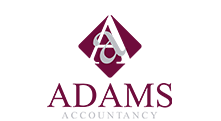Everything you need to know about Input VAT and VAT returns

VAT is an area of accounting that sends business owners into a panic. The VAT return is one of the most dreaded of finance tasks. With the advent of cloud accounting tools such as Xero and QuickBooks, it’s become a little easier to prepare the VAT return. HMRC now require VAT registered businesses to use Making Tax Digital (MTD) compliant software to submit their VAT returns. Of course, many entrepreneurs leave this activity to their accountant, but we think it’s always good to have a basic understanding of how VAT works.
What is input VAT?
Input VAT is the sales tax that’s incurred when you buy goods and services that are subject to VAT.
Input VAT is also often known as input tax and it’s levied on vatable sales when a supplier is VAT registered.
What is output VAT?
Output VAT is the VAT that’s added to a sales invoice by a VAT registered company for goods and services which attract VAT. The rate of VAT varies according to the type of supply. Most supplies attract 20% VAT but the VAT rate for energy is 5% and there are zero-rated and exempt supplies. More information on VAT rates is available on the HMRC website. Output VAT is collected by the supplier on behalf of the government.
What is an example of input VAT?
Let’s look at an example of how input VAT works.
Your business makes sweets. You buy ingredients worth £100 and you are charged £120 by your supplier. £20 of this is input VAT.
What is an example of output VAT?
Once you’ve made your sweets, you sell some to a customer. Your invoice is for £10 and you add 20% for VAT. £2 is therefore output VAT.
What happens with input and output tax?
If you pay input VAT on goods and services you have purchased, you can deduct this from the output VAT you have collected from your customers and pay the difference to HMRC. If the input VAT is more than the output VAT in the reporting period (usually three months), you will be due a VAT refund. You can choose to carry forward the refund amount to be offset against VAT payable in future periods.
Claiming Input VAT
To claim input VAT on your purchases, you must provide valid documentation (usually a VAT invoice) which must include:
- the supplier’s name and address
- the supplier’s VAT registration number
- the name and address of the person to whom the goods are supplied
- a unique invoice identification number
- the date of issue
- the time of supply of the goods or services (this may be the same as the date of issue)
- a description of the goods or services supplied, including the quantity of each type of item
- the total amount, excluding VAT
- the total amount of VAT
- the price per item, excluding VAT
- the rate of VAT charged per item
Types of purchases eligible for input VAT claims
You can only reclaim VAT on goods and services that were exclusively used for your business, for example:
- Goods and services purchased for business use
- Business trips and employee travel expenses
- Mobile phone calls for business purposes
- Utility bills for business premises
- New cars or commercial vehicles used solely for business journeys
- Business mileage and fuel costs
- Office furniture
Ineligible purchases include:
- Goods and services used solely for personal use
- Business entertainment expenses
- Goods sold under second-hand margin schemes
- Assets transferred as part of a going concern
Important points to note on input VAT eligibility
- VAT can be reclaimed on the business proportion of items used for both business and personal purposes
- Goods purchased within 4 years and services within 6 months of VAT registration can be claimed
- Proper documentation like VAT invoices and receipts must be kept
- There are special rules for certain high-value items like computers, aircraft, and property over specific cost thresholds
Common Input VAT Issues
Partial Exemption
- Occurs when a business makes both taxable and exempt sales.
- Requires careful calculation to determine how much input VAT can be reclaimed.
- Can be tricky for businesses with mixed income streams.
Restrictions on Claiming Input VAT
Business entertainment costs are generally not recoverable, with very few exceptions.
Car purchases have complex rules apply based on:
- The vehicle’s use (business vs. personal).
- CO2 emissions.
- Whether the car is available for private use.
Input VAT and VAT Schemes
Different VAT schemes affect how you reclaim input VAT.
Standard VAT Accounting:
- Reclaim input VAT as you make purchases
- Not affected by when you pay suppliers
Cash Accounting Scheme:
- Reclaim input VAT only when you pay suppliers
- Can help with cash flow
Flat Rate Scheme:
- Limited input VAT reclaims
- Can claim on capital assets over £2,000
- Uses a fixed percentage of turnover for VAT
Annual Accounting Scheme:
- One VAT return per year
- Can simplify input VAT management
It’s important to choose your VAT scheme carefully and get advice from an accountant. You’ll need to consider your business type and size and how much input VAT you typically claim. Remember to check eligibility criteria and turnover limits when making this decision.
Dealing with a VAT audit
If you receive correspondence from HMRC stating that you will have a VAT audit, don’t panic. Here’s a checklist to help you prepare.
Review the notice carefully
- Check the date, time and location of the proposed audit
- Note what records and information HMRC is requesting
Gather required documents
- Collect VAT returns for the periods being audited
- Compile supporting documents like invoices, receipts, bank statements
- Organize records to show a clear audit trail
Conduct an internal review
- Check your VAT returns and calculations for any errors
- Review your VAT accounting processes
- Identify and prepare to disclose any issues proactively
Prepare your team
- Brief relevant staff on the upcoming audit
- Ensure someone knowledgeable about your VAT processes will be available
Consider professional help
- Consult a VAT specialist or accountant if you need assistance
- They can help you prepare and may attend the audit
Respond to HMRC
- Confirm the audit appointment
- Ask for clarification on any points if needed
During the audit
- Be cooperative and transparent
- Answer questions honestly but concisely
- Take notes on any issues raised
Post-Audit
- HMRC provides a written confirmation detailing:
1. Required improvements in VAT record keeping
2. Necessary corrections to the VAT account
3. Any over or underpayment of VAT
4. Penalties, if applicable
Appeal Process
- Businesses can appeal HMRC decisions within 30 days
Common errors found during a VAT audit
1. Incorrect handling of VAT on fuel:
- Not restricting VAT claims to fuel used exclusively for business
- Missing car fuel scale charges
2. Not keeping proper mileage records
- Mistakes with VAT on motor vehicles:
- Incorrectly claiming VAT on car purchases
- Not restricting VAT claims on leased cars to 50%
3. Not charging VAT on non-standard supplies like:
- Management charges between companies
- Supplies to staff
- Barter transactions
- Property letting
- Recharges to third parties
4. Failing to account for VAT on deposits/advance payments
5. Reclaiming input VAT without proper supporting invoices
6. Claiming VAT on non-VATable items like:
- Air fares
- Train fares
- Some taxi fares
7. Errors in partial exemption calculations for businesses making both taxable and exempt supplies
8. Not accruing for VAT on imported services (reverse charge)
9. Errors in time of supply (tax point) for transactions around VAT quarter ends
10. Mistakes with credit notes and bad debt relief:
- Claiming VAT relief too early on bad debts
- Not adjusting for unpaid creditors after 6 months
Contact Adams Accountancy
Expert VAT Accounting Support For Your Business
If keeping up with HMRC’s rules and reclaiming input VAT correctly feels daunting, you might benefit from our professional VAT accounting services. Our team can manage VAT registration, submissions, input/output VAT reconciliation, and VAT compliance on your behalf.
We ensure all returns are submitted on time, and that you recover every allowable input tax. With a specialist handling your VAT, you can focus on running your business with confidence. Call us on 01322 250001 or contact the team online for a free chat.

